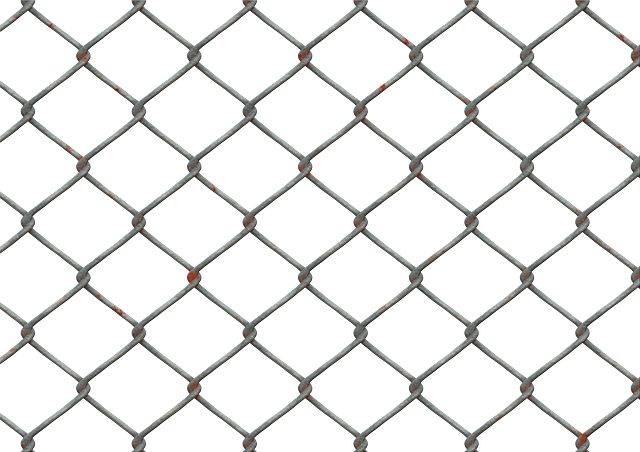In New Bedford, Massachusetts, enhancing your outdoor space with a wooden fence is an excellent investment. This comprehensive guide delves into the art of wooden fence installation, offering insights to homeowners seeking both functionality and aesthetics. From understanding intricate installation processes to navigating local regulations, we explore why partnering with reputable New Bedford contractors is pivotal. We’ll dissect design considerations, highlight the importance of material quality, and provide essential tips for post-installation care, ensuring your new fence stands the test of time.
- Understanding Wooden Fence Installation Processes
- Benefits of Choosing Local New Bedford Contractors
- Key Considerations for Your Fence Design
- The Role of Material Quality and Durability
- Permits and Regulations in Massachusetts
- Post-Installation Maintenance Tips and Tricks
Understanding Wooden Fence Installation Processes
The process of installing a wooden fence involves several key steps, each demanding precision and skill to ensure a durable and aesthetically pleasing result. It begins with measuring and marking the perimeter of the desired fence line, taking into account any gates or entry points that need to be incorporated. Next, posts are set, typically in concrete, to provide solid support for the fence panels.
Once the posts are securely in place, vertical boards or rails are attached, forming the framework of the fence. Horizontal cross-rails are then secured to create a sturdy base for the final panel installation. The actual panels, made from treated wood to resist rot and insects, are fitted into the frame, ensuring they are level and properly aligned. Finally, gates and hinges are installed, along with any locking mechanisms, completing the wooden fence setup.
Benefits of Choosing Local New Bedford Contractors
When it comes to wooden fence installation, opting for local New Bedford contractors offers numerous advantages. Firstly, they possess in-depth knowledge about the local climate and conditions, ensuring your fence is installed to withstand the unique challenges of the region. This expertise translates into a more robust and durable final product. Secondly, hiring locally supports the community, fostering economic growth and contributing to the employment of skilled professionals within your own city.
Additionally, local contractors often provide better accessibility and responsiveness. They are typically based in the area, making communication easier and faster. This means any concerns or adjustments you may have during or after installation can be addressed promptly, ensuring customer satisfaction.
Key Considerations for Your Fence Design
When designing your new wooden fence, there are several key considerations to keep in mind. Firstly, determine the purpose of the fence; is it for privacy, security, or aesthetic appeal? This decision will influence the style and height of your fence. Different neighborhoods have local guidelines and restrictions regarding fence heights, so be sure to check with your municipality to ensure compliance.
The type of wood you choose plays a significant role in the long-term look and durability of your fence. Opt for rot-resistant varieties like cedar or pressure-treated pine to prevent decay and ensure longevity. Consider the natural elements in New Bedford’s climate, such as moisture and salt air from the ocean, which can impact wood choices. Additionally, think about the overall aesthetic you desire—natural, rustic, or sleek and modern—to align your fence design with your property’s existing features.
The Role of Material Quality and Durability
When it comes to wooden fence installation, New Bedford residents should prioritize material quality and durability. Choosing high-quality lumber ensures a longer-lasting fence that can withstand the harsh Massachusetts climate. Weather conditions like heavy rain, strong winds, and snow can take a toll on wood over time, so selecting rot-resistant and weather-resistant varieties is key to preventing early deterioration.
Durable materials not only protect your investment but also contribute to the overall aesthetics of your property. A well-built fence with high-quality timber creates a robust barrier that enhances curb appeal. It provides privacy, security, and a defined boundary for your outdoor space, all while maintaining its structural integrity year after year.
Permits and Regulations in Massachusetts
When planning a wooden fence installation in New Bedford, Massachusetts, it’s crucial to familiarize yourself with the local permits and regulations. The state has specific guidelines regarding property alterations, including fencing. Homeowners should obtain the necessary building permits from their local building department before starting any construction. These permits ensure that your project complies with safety, health, and zoning codes.
Massachusetts also has environmental protection laws that may impact fence installation, particularly near water bodies or in protected areas. It’s essential to check with the Massachusetts Department of Environmental Protection (MassDEP) to understand any restrictions or requirements for fencing in sensitive habitats or watersheds. Understanding and adhering to these regulations will ensure a smooth installation process and avoid potential penalties.
Post-Installation Maintenance Tips and Tricks
After your wooden fence is installed, proper maintenance will ensure its longevity and aesthetic appeal. Regular cleaning is a fundamental part of upkeep; use a soft brush or cloth to remove dirt and debris, and consider a pressure washer for more stubborn stains. Applying a fresh coat of sealant every 1-2 years is crucial to protect the wood from moisture and UV rays, preserving its color and texture.
Inspect your fence frequently for any signs of damage, rot, or insect infestation. Address issues promptly to prevent further deterioration. Minor repairs like tightening posts or replacing broken boards can be done yourself, while more extensive work should be left to professionals. Keeping the area around the fence clear of overgrowth will also help maintain its appearance and ensure proper drainage, reducing the risk of water damage.
